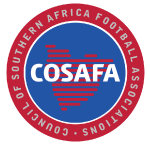
Beach Soccer – How It All Works
The 2021 COSAFA Beach Soccer Championship will be staged in Durban from November 17-21 where seven sides will compete for the trophy.
It is the first time the championship will be played since the inaugural event in Seychelles in 2015, so just as a refresher for fans, here is a quick guide to the rules and regulations around beach soccer.
How long does a match last?
A match is split into three 12-minute periods, though crucially the clock stops when the ball is out of play. So when there is a goal, four or injury, no time elapses until the ball is back in play. There is a three-minute break between each period, while the ‘third’ will only end when the ball goes out of play.
How many players are in a team?
Each side can have five players on the pitch at any one time, a goalkeeper and four outfielders. There are seven substitutes on the bench and there is no limit on how many subs can be made, with players coming on and off the pitch as the coach demands. A change from association football is that coaches do not have to wait for the play to be stopped to make a sub, players can come on and off while the ball is in play.
Is a standard sized ball used?
Yes, the size of the ball is the same as association football, but the weight is less to make it more practical for playing on sand.
How big is the pitch?
This can vary slightly, but the pitch should always be between 35 and 37 metres long, and between 26 and 28 metres wide. Some purpose-built sand pitches are used at venues with no natural beach and these should have a depth of at least 40 centimetres. The goals are smaller than regulation size and are 2.2-metres high and 5.5-metres wide.
How many match officials control the game?
There are two referees on the pitch and both have equal authority to make decisions. They are usually split between each half. There is also a third official who acts as a timekeeper to ensure accuracy with all the various stoppages of the clock.
Is there red cards?
Yes, there are yellow and red cards, however if a player is sent-off in a game he can be replaced by a teammate after two minutes to bring his team back up to five players. He may not re-join the game at any point though.
What if a game ends all square?
There are no draws allowed in beach soccer, so if a match is level at the end of the third period, there is a three-minute period of extra-time that is played. If this does not bring a winner, then the game goes to spot-kicks. This is the usual format with five spot-kicks for each side and then sudden death if a winner still needs to be determined.
Free-kicks and throw-ins … it’s complicated.
The fouled player has four seconds to take a free-kick unless he can’t due to injury, in which case a teammate may take over. Teams cannot form a wall to defend a free-kick. If a team commits a foul in their own half, then all players must stay behind the ball until it is taken, essentially giving the attacking team a free shot at goal. The players are not allowed to form a wall when a free-kick is taken. If a team commits a foul in their own half, all players must remain behind the ball until the set piece is taken. If the foul is committed in the opponents’ half, all players must stay at least five metres away from the ball until the free-kick is taken and cannot stand in the line of fire. A re-start from a throw-in can be taken either with a hand or the foot.
No offsides
Unlike in association football, there is no offside rule on beach soccer.

